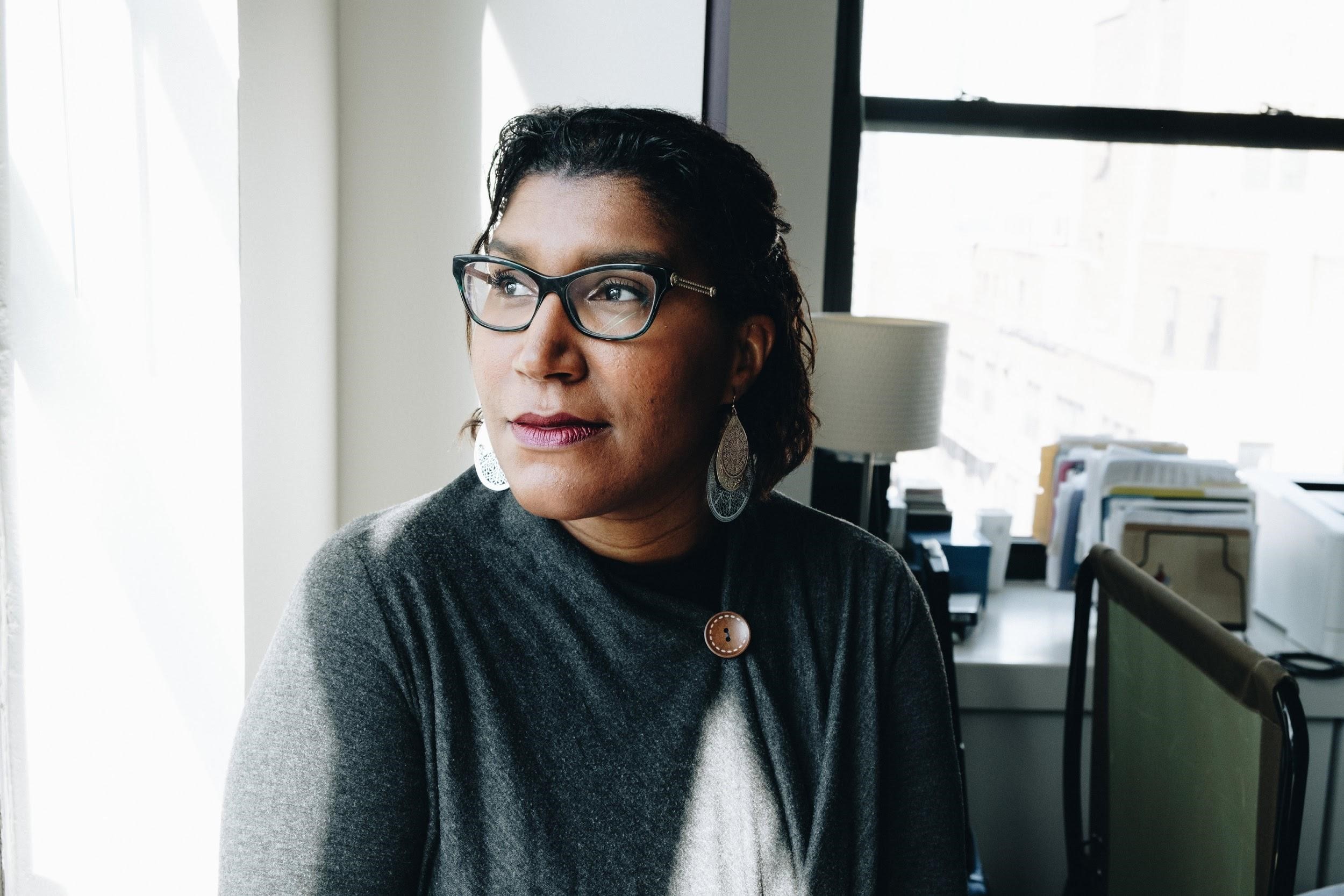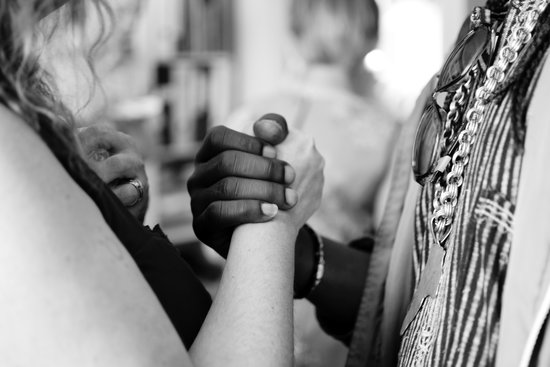Last winter, during the Q&A portion of a panel I’d participated in at B’nai Jeshurun, a synagogue on the Upper West Side of Manhattan, a 5-year-old Black girl’s question punctuated the evening’s conversation with a question that pierced my heart like an arrow.
“Why is it,” she asked, “that Black people always live in places that are dangerous?”
Everyone on the panel turned in my direction. And then our moderator assigned the question to me. My skills as a communicator whose work had heretofore focused on either persuading elected officials or voters were now being put to the test by someone who probably couldn’t tie their own shoes.
How would I explain systemic racism and perennial inequality to a kindergartener, in fewer than 60 seconds, no less? Her very asking of the question underscores the deep impacts of racism that have been purposely built into the system of America. Even a 5-year-old can see that Black lives are lived differently and matter differently. What she cannot see at five years old - and to be sure many adults fall into this category as well - is that this disparity is the result of hundreds of years of systemic racism, a racism that is not only about lynchings and the Ku Klux Klan, but also about voting and redlining, education and jobs.
In all honesty, I don’t remember my precise answer. My heart was beating too loudly in my ears to actually hear what I was saying. But we do know the general answer to this question: Black people often live in places that are dangerous because we always have. We have never lived anywhere truly safe since the transatlantic slave trade brought us here. The murders of Black people in their homes, their cars, and their neighborhoods by the very people sworn to serve and protect has galvanized a movement and demonstrated how very unsafe it is to be Black in America.
A teaching from Rabbi Toba Spitzer, relayed to me by Rabbi Elyse Wechterman, captures the severity of racial injustice in America and applies Torah guidance:
כִּי־יִמָּצֵא חָלָל בָּאֲדָמָה אֲשֶׁר יְהֹוָה אֱלֹהֶיךָ נֹתֵן לְךָ לְרִשְׁתָּהּ נֹפֵל בַּשָּׂדֶה לֹא נוֹדַע מִי הִכָּהוּ: וְיָצְאוּ זְקֵנֶיךָ וְשֹׁפְטֶיךָ וּמָדְדוּ אֶל־הֶעָרִים אֲשֶׁר סְבִיבֹת הֶחָלָל
If—in the land you are coming to possess—there is found someone slain, lying in the field, and the identity of the slayer is not known: your elders and officials shall come out and measure the distances from the corpse to the nearby towns…
This scenario describes a situation when a murder has occurred, but it is impossible to know who actually committed the crime. Without proper retribution, there is “blood guilt” that cannot be absolved which will endanger the entire society. In place of proper justice done to the perpetrators, the leaders of the nearest city must undertake a blood ritual, thereby removing the blood guilt.
When a crime has occurred that involves the death of a human being, the land itself - and those living in it - become polluted. Even if the people directly responsible for the crime can’t be found, that guilt must be dealt with; the pollution must be cleaned up, or all the inhabitants of the land will suffer.
Until we, as Americans, do proper teshuvah for the double sins of slavery and the annihilation of Native Americans, we will continue to suffer profoundly as a society.
The Torah says we have to come outside and look. We have to measure our own distance to the crime. We have to say, “I might be accountable, in some way, for this atrocity.”
This underscores for me that combating the systemic racism that has plagued the United States since our very founding is the moral imperative of our time. As Jews, we speak with moral clarity and prophetic voice that is uniquely situated to the moment - and this moment, to me, means addressing this challenge in two distinct ways: We must look at how we combat outside the Jewish community, in greater society, as well as inside the Jewish community, especially with and for Jews of color, particularly Black Jews. What are the questions we must ask ourselves and the steps we must take to combat the interpersonal and structural racism that is in our DNA.
It is not anyone’s fault that racism and white supremacy show up relentlessly in our everyday lives, both have been hard-wired into American DNA, from the 3/5th clause in the U.S. Constitution which stated that enslaved Black people were three-fifths of a person, to Supreme Court decisions like Plessy v. Ferguson, which established the concept of “separate but equal,” to voter purges and disenfranchisement meant to keep Black Americans from exercising their right to vote. Importantly, these examples say nothing of transportation policy, health policy, criminal justice policy, lending policy, education policy, environmental policy and the myriad legal ways the system is stacked against Black people and shapes our everyday lives. And systemic racism isn’t limited to systems; it’s ever-present nature means that it also informs interpersonal racism. Many of us, Black people included, have internalized ways of seeing Black people and Black life through a lens that has been clouded by a system that treats Black people as less-than.
As Jewish leaders at a time of both unprecedented privilege (though to be sure, rising antisemitism threatens to undermine this status) and national moral crisis, what are we doing to bring about change in our wider society? With whom are we partnering? From whom are we learning? I would argue that as a community in recent years we have shied away from being too political, but I would further argue that our current situation is less about politics and more about our morals, and becoming more political may be how we approach this moment of moral crisis. Are we supporting the organizations that actively work to end police violence, protect voting rights, and clean the water in Flint, Michigan? Are we inviting dialogue with leaders in Black and Brown communities, actively seeking to understand and learn? Are we using our power, our resources and our influence to invest in following the leadership of Black-led organizations who have been fighting for equality and racial justice for decades? Per the Torah and Rabbi Spitzer, how are we coming outside to look at the damage that has been done? And what are we doing when we have measured the distance from ourselves to the crime and realize that we are still committing it?
In addition to our work righting the wrongs of our society, we must also look inward to our community. How are we shaping our Jewish community to look and be? It is well-known that being a Jew of color amidst largely-white American Jewry is a perennial challenge. (Of course, there are white Jews who believe that “they aren’t white, they’re Jewish,” but in a racialized country such as ours, simply claiming non-whiteness while exhibiting the outward characteristics of such is an uphill battle.The distinction is lost on just about everyone else.) Jews of color have long documented the exclusion, the humiliation, the interrogations that have pushed many of us to the periphery of mainstream Jewish life and engagement.
As Jewish leaders, we can take a fresh look at what it means to build and reflect the multiracial Jewish community that we already are. What are we doing in our synagogues and institutions to welcome and invest in Jews of color? What programming are we offering? How are we making day schools and synagogue membership more accessible to Jews who may lack access to the resources to make them affordable? How are we making sure that our Federations, day schools, communal organizations and synagogues are places where racism is addressed and tackled and Jews of color feel safe?
Organizations like UJA-Federation of New York, the Cutler Jewish Day School in Columbia, SC, Urban Adamah in Berkeley, California, and IKAR in Los Angeles are all moving, in various ways, to meaningfully pursue racial justice. There is much to learn and much to teach, but it starts with asking the right questions and being willing to grapple with uncomfortable answers.
Earlier I noted that it is not our fault that racism and White supremacy show up relentlessly in our everyday lives. But it is our fault if we fail to redress these wrongs and build the country we know we can be, a place where all of us are free to live and free to thrive. Why the work we must do to create a society where we all belong is so critical is reflected in one of my favorite midrashim, from the Yalkut Shimoni.
"God gathered the dust [of the first human] from the four corners of the world - red, black, white and green.
Red is the blood, black is the innards, and green for the body. Why from the four corners of the earth? So that if one comes from the east to the west and arrives at the end of his life, as he nears departing from the world, it will not be said to him, 'This land is not the dust of your body, it's of mine. Go back to where you were created.' Rather, every place that a person walks, from there she was created and from there she will return."
In service of creating the world that is safe for all of us, it is imperative that we are not satisfied with simply being “not racist,” (a lofty goal most, if not all, of us fail to reach anyway). We must actively be anti-racist. It is hard, daily and long-term work to rewire our national DNA and the DNA of ourselves and our communities, but that is the task ahead of us.
Like the little Black girl at B’nai Jeshurun, we must ask the right questions. The hard questions. Of the right people. Right now. Tomorrow, and the next day, and the next. We are at an American flashpoint, where the reckoning of 400 years of systemic racism is before us, both outside the Jewish community and within. What we do next will determine our collective future, for the Jewish community, for the Black community, and especially those of us who live and breathe in both. The oft-quoted words of Rabbi Tarfon are particularly resonant in this moment: "It is not your responsibility to finish the work [of perfecting the world], but you are not free to desist from it either.”

Photo by Aarón Blanco Tejedor on Unsplash
Get To Know The Author
WHP Alum Ginna Green (East Bay 10) is a political strategist and consultant and the former Chief Strategy Officer of Bend the Arc: Jewish Action.
Other posts by this author ›

